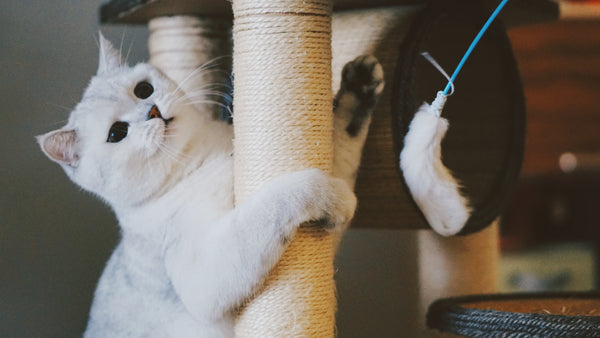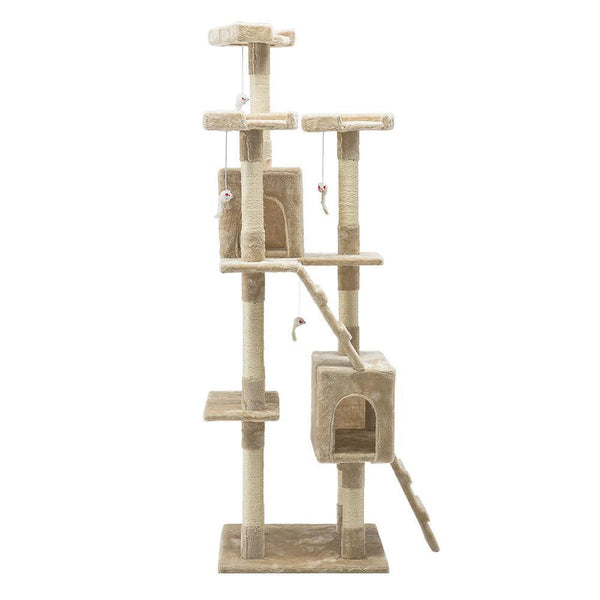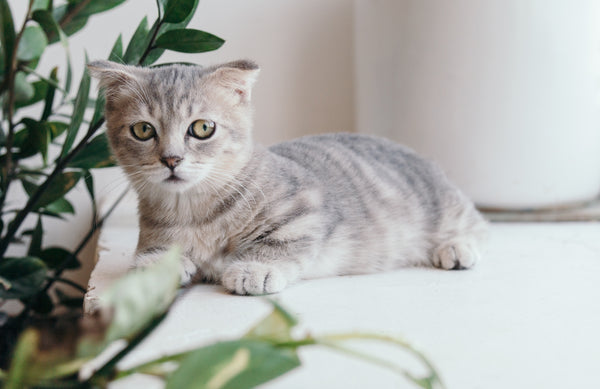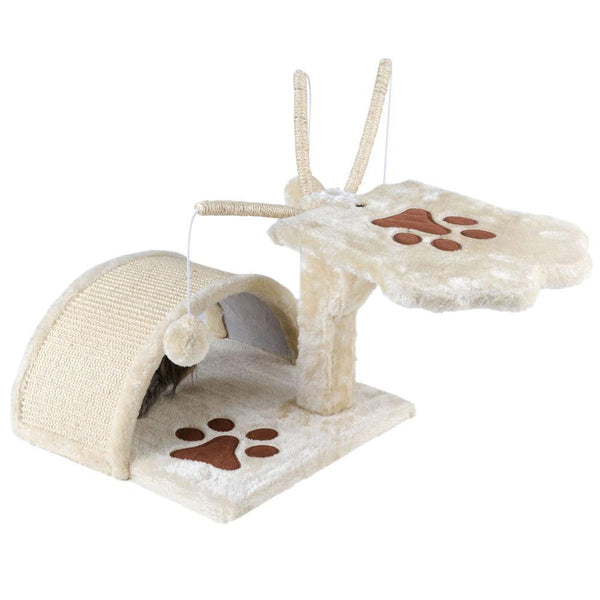How to Stop Your Feline Friend From Ruining Your Stuff
If you’re frantically trying to cover your couch in duct tape and hideous 70s vinyl to stop your cat from leaving scratch marks all over it, put the roll down and take a breath. You can have your couch and sit on it too – scratch-free.
There are so many cat behaviours that make us chase their affection like curling up next to us, gently purring and stroking their tail at our legs. Making the 2 am meowing sessions and dead rodent door deliveries seem obsolete. However, you don’t have to put up with your feline friend ruining your furniture, there is a simple method of altering their behaviour to respect your hard-earned belongings.

Cats inherently scratch, it’s their natural trait inherited by their larger feline cousins. Feral cats alike scratch their claws on trees to keep their claws healthy, conditioned and sharp. They also scratch to stretch and strengthen their bodies – a full-body workout at the expense of your timber dining table!
Cats’ claws also contain scent glands that release odours to mark their territory in your home. This is important in a multi-cat/ animal home to establish rank. They usually mark their territory on prominent areas like your sofa or armchair, scratching these serves an emotional purpose too – making them feel less stressed and more secure. Surprisingly, they’re not costing you hundreds in reupholstering just to spite you.
You may be thinking, why not just prevent the scratching altogether with declawing? Declawing is a surgical procedure where the claw and end of each bone are amputated. Declawed cats must be kept indoors permanently because their primary self-defence mechanism has been removed entirely. After this procedure, declawed cats can present with chronic pain, behavioural aggression issues and urination outside the litterbox and around the house. The post-surgery recovery is also risky and can change your cat’s balance – the procedure is banned in Australia, New Zealand, Brazil and the United Kingdom. It’s much more beneficial for your cat’s wellbeing and also inexpensive to positively train scratching behaviours out of your cat rather than tendonectomy procedures.
Three Stage Feline Scratch Bootcamp
1. Scratching Post Strategy
If you don’t have a scratching post already, it’s likely the cause of your destroyed couch or carpet is simply that your cat didn’t have anywhere else to stretch or destress. There is a plethora of scratching post shapes, sizes and textures. There are vertical, more traditional posts; horizontal boxes, thick or soft carpet – buy a few so you can test which one your cat seems to prefer – suiting their needs. Make sure that your post is tall enough so they can fully stretch their upper body.

Once you’ve (mainly your cat) chosen your scratching post, it’s time to consider placement. If you own a scratching post that’s neglected by your kitty, it could be due to its unappealing placement – a scratching post in your cold, dusty garage isn’t going to inspire reform in behaviour. Rather, place it next to or near the areas your cat is targeting, like the couch or ottoman. Placement near their existing hangout spots is a smart choice too – well-lit areas like windows and their bed or sleeping area tend to work well. If you see your cat gravitating towards or using the scratching post try and affirm this behaviour with a treat or some praise. Cats mark their territory by scratching so make sure the post is in an area where they can show off their royalty status.

180cm Multi Level Cat Scratching Post (Beige) Paydaydeals.com.au
2. Make Your Couch An Unappealing Scratch Station
If you’re really committed to saving your furniture at any cost consider tucking a sheet around the scratched area so tightly – your cat won’t be able to get under it and may consider using that new post you bought them. You can also try using double-sided tape or foil on the couch, deterring them from scratching further. However, if using these not so aesthetic methods doesn’t appeal to you, spray the couch or area they’re scratching with citrus-scented [room] spray as cats have a natural aversion to citrus scents. There are also scratch repellent sprays that deter your cat from scratching furniture with natural ingredients unharmful to you and your fur baby – consult your local pet supply store or vet too.

3. Make the Scratching Post Attractive
After making your couch a less attractive place for your non-human counterpart, it’s time to make the scratching post smell dreamy. Sprinkle the post with catnip or honeysuckle. Catnip contains nepetalactone which sends your feline friend into a delightful, temporarily altered state… however, catnip usually does not affect younger cats under six months old. In this case, use honeysuckle with a younger cat or an older cat with a dulled sense of smell – the aroma of honeysuckle is stronger than catnip. Make sure to use honeysuckle and catnip products from trusted vendors who supply a certified product. After successfully dousing your scratching post with the safe cat ‘drug’, start building up the interest with a wand toy. Play with your cat using the wand toy near the post or draped over the post to create physical contact between your cat and the post.

45cm Cat Scratching Tree (Beige) Paydaydeals.com.au
What’s always important, scratching or not is to always find some time in your day to play and bond with your cat. Much like children, their destructive tendencies could be resulting from lack of attention. Importantly, don’t grab your cat and force its claws onto the pole, this will not only traumatise them but avert them from the pole altogether. Being a guardian of an animal means a commitment to their welfare and an effort to mitigate negative behaviours with positive encouragement and associations – being a loving companion for their life!
